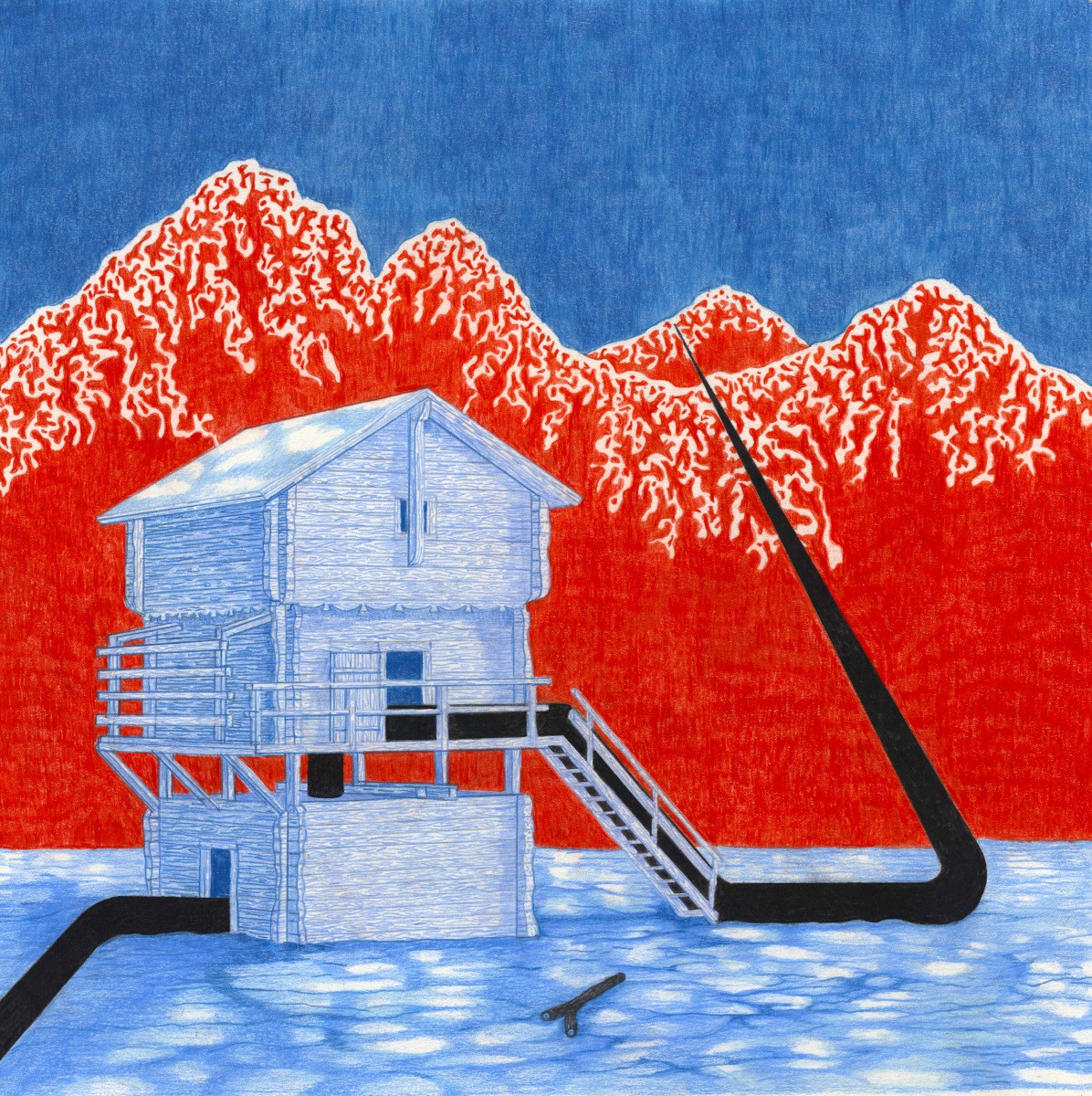
Like his chosen arthropod name, Munich multi-instrumentalist Mathias Götz has many legs to stand on, musically speaking of course. From recognizable globally celebrated instruments in piano, keyboard, snare drums and trombone, to the culturally specific zils and dabuka. What could have been a chaos of overwhelming eccentricity and confusion has been miraculously gelled together to give his compositions a surprisingly consistent style. The Millipede style. This is mostly due to the clever selection of matching instruments that flow within each other and share common attributes. The encyclopedic apparatus that ventures through the eleven tracks on his debut eponymous LP could be broken up into a hierarchy of common frequency.
On the apex layer is one of Götz aka Le Millipede signature instruments, the Casio VL Tone Mini Keyboard; made globally famous in 1981 by another German act on the Neue Deustche Welle-style hit “Da Da Da” by Trio. This is combined with the stylophone most effectively on bitpop tracks such as “Die Jährlichen Winde” (The Yearly Winds) and “Rote Laterne” (Raise The Red Lantern), which easily transforms the listener into a castle-storming Atari fantasy role-playing game. In fact the majority of the album radiates the feeling of being lost in a pixel-based lucid dream, or as if we are stuck on a puzzling quest of dead ends and planetary riddles, set by oddball Pythonesque characters.
A trustworthy compass in the bewildering adventures is the piano (both toy and conventional), bringing back organic qualities to the OK Computer-title sounding “Happy Planet Index” and “Kollege“, although like the trombone, it occasionally contributes to a melancholic and glum personality, rather than optimistic safety. The latter instrument creates a striking contrast to the dominating electronic mechanics, points at his apprenticeship in brass instrument construction, and invents an intriguing genre of 8-bit-jazz, as if looking at a sepia-toned ballroom painting from the 1920’s and imagining that the lonely hearts passed the time with Game Boys. Although sometimes, the trombone stands proudly alone in baroque fashion like in the opening of “Die Jährlichen Winde”, an intimation of a John Williams Science-fiction theme, which evolves into sorrowful characters similar to Stina Nordenstam’s The World Is Saved.
The other apex tool is the stunning experimental application of Götz voice. Those without an understanding of the German language won’t feel alienated because meaningful lyrics aren’t uttered. Instead, he beatboxes, throat clears (the Moog vibrating “Ypsilon“), hums freely on “Johann Palisa” and “Marmor” (Marble), tribal chants and adds choral bliss on the Efterklang-aura of “Jobprogramm“.
On the album’s midway point, “Rosa Rausch and Sara Gluck” will give speech-sampling maestros Grasscut a run for their money, as it’s built on layers of voices aloft Götz’s ethereal legato. It is inspired partially by Arvo Pärt, an Estonian composer of sacred music, which the German has confessed to admiring. The aforementioned voice samples on the surface, seem to repeat the word “Quiet” from different technological sources; clear studio, radio receiver and a posh female voice, that’s possibly on the telephone.
Xylophone, mbira and harmonium feature in patches on the album. The latter helps build a Mafia/Egyptian/predatory sound to “Gedanken” (Thoughts), a fascinatingly exotic track that begins with raindrops of glockenspiel. Rapidly performed xylophone gives off a tropical nature that’s made creepier by a Mbira that’s reminiscent from that fortune-telling scene from Big on Herbst (Fall).
On the base layer is his use of African/South American/Native American percussion, which will be pretty unfamiliar to the average listener, unless you’re a music graduate or culturally educated to a high level. The basket-encased Caxixi is seen as an exorcising instrument in West Africa and is shaken simultaneously with the more well-known maracas and the tapping of the goblet drum and pounding of the davul to create a hip-hop beat on “Johann Palisa“; a track named after an Austrian astronomer, who discovered asteroids like Mathias Götz finds unusual instruments. The combination of jazz and aboriginal atmospherics point towards Götz’s interest in the avant-garde, mythological-believing and notorious black sheep Moondog, with the sacrificial vibe on it’s most extreme on “Marmor”.
Fans of indie acts Django Django (for the percussive pace), Hot Chip, and cult followers of Pascal Comelade and Yann Tiersen/Detektivbyran will fancy the child-like charm and rhythm on tracks such as “Rote Laterne“, whilst “Kollege” sounds like the electric moans of Pendulum, Knife Party and Hadouken! minus the blistering drum and bass and dubstep.
However, depending on each individual’s preference for music, this might not be an addictive listen and it’s hard to imagine any station giving it radio airplay because it’s so unusual. This is unfortunate because it has a praiseworthy cohesion to it. If anything is for certain, it’s an eye-opening education in unconventional orchestration from a country that continue to be innovators. Le Millipede’s self-titled album is out now via Alien Transistor, purchase it here.
Words by Matt Hobbs





